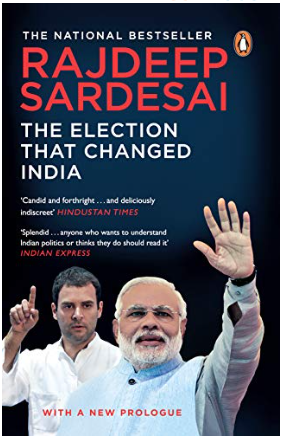
The Election That Changed India
The 2014 Indian general election has been regarded as the most important in Indian history since 1977, following Indira Gandhi’s imposed state of emergency in 1975. Having introduced a new style of political campaigning that broke every rule in the game, the Bharatiya Janata Party (BJP) scored a spectacular victory, decimating the ruling Congress Party.
In this book, the author tracks the typical dramas of an election year in India through the key players and the big stories. It starts in 2012, when Narendra Modi won the Gujarat state elections for a third time, but quickly set sights on the bigger prize, then covers the scandals that crippled UPA-II (United Progressive Alliance, the ruling coalition), before moving to the strategies of team Modi, and the extraordinary missteps of Rahul Gandhi.
Elections are a great leveller – for more than five decades, millions of Indians have lined up across the country with hope in their hearts to exercise their franchise. It is the one day when the gap between the “politician” and the “common man”, between the privileged car owners and the auto rickshaw drivers, between a billionaire and a “below the poverty line” family, dissolves. Everybody stands in line waiting for their turn to vote, recorded by indelibly staining their fingers with ink. More than 550 million Indians voted in 2014, larger than the population of the United States, world’s oldest democracy. A Pakistani friend of the author noted, “In Pakistan, when we want to change the government, we bring in the army; in India, you use the ballot box.”
The 16th general elections marked a tectonic shift in Indian politics. It was in a way, a political tsunami (or “tsuNamo”). The outcome was staggering – BJP became the first non-Congress party to win a clear majority since Independence in 1947. In contrast, the Congress party, with its roots in the freedom movement was decimated.
The election unleashed a chain of processes which will change the way future elections are fought. Never before has so much money been spent on fighting an election. Bolstered by corporate support, the BJP easily outspent its rivals. This approach may create problems further down the road for those donors if the politicians elected do not deliver an acceptable outcome.
With the rise of EVMs (electronic voting machine), the musclemen were replaced by machine men. With the aid of technology, the level of micro messaging, was unprecedented. Never before did an SMS win as many volunteers for a political party as it did for BJP this time.
2014 also marked the coming of age of political advertising – hoardings, billboards, television, newspapers, radio, etc. If one spent eight weeks in India between March and May, one would be mistaken for thinking politics was the only “product” on sale.
This election was marked by the typical ingredients of a Bollywood movie. It became a clash between Modi and Rahul – the foot soldier vs. the prince, the meritocrat vs. the dynast, the small-town tea boy vs. the elite child.
Within the larger story, there were subplots such as the sudden rise of AAP (Aam Aadmi Party) and Arvind Kejriwal in Delhi as well as regional power players like Mamata and Jaya Lalitha as well as the breakup of Andhra Pradesh and the typical caste politics of Uttar Pradesh & Bihar.
In the author’s view, Modi’s biggest success was the mandate he built around himself based on his successes as the Chief Minister (CM) of Gujarat; the “Gujarat model” of governance alongside the high economic growth achieved, and the rising incomes that were brought with it. Modi is a charismatic orator, a CM who spun the dream for a positive future (“acche din”) at a time when the country was burdened with negative headlines focusing on political greed and corruption. In doing so, he was able to discard his own tainted legacy dating back to 2002 where more than a thousand people died in religious motivated riots in Godhra, a city under his watch. Modi artfully changed the political discourse, to a more inclusive vision, premised on effective governance. This is how the voters saw it, at least.
Sardesai’s view is that the outcome of the election reflected Modi’s understanding of the changing demographics in India – a younger, aspirational society, one of the most upwardly mobile globally, perhaps. The core of this new and more attractive India is a “neo-middle class” society, tired of state sponsored welfare-ism and demanding transparent and market driven growth.
A good read for followers and lovers of Indian politics as the author sets out to capture the story of India’s election frenzy in all its rainbow colours.
Vishal Agarwal
March 2022
